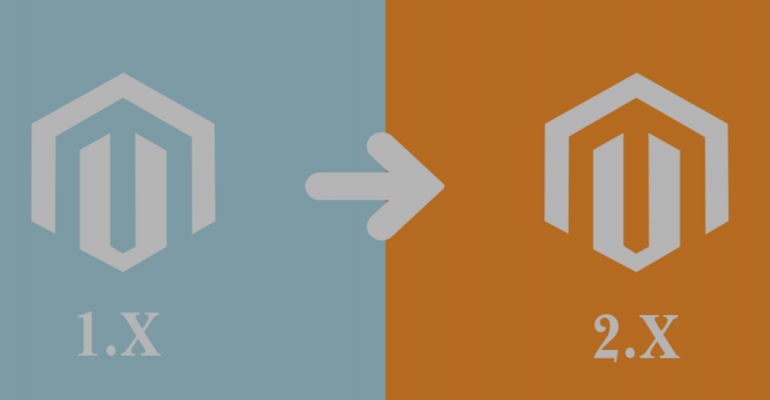Magento 1 to Magento 2 Migration: How to Upgrade Magento 1.9 to 2.0

Magento 1 to Magento 2 Migration: How to Upgrade Magento 1.9 to 2.0
Magento migration from 1.x to 2.x is undoubtedly the most discussed and action oriented topic of the year in the eCommerce segment.
Magento officially announced its withdrawal from its Magento 1.x support from 30th June 2020 onwards, Hence it is final now that those who fail to migrate their store from Magento 1 to Magento 2 won’t receive security updates after 30th June, 2020.
It means any Magento eCommerce store not yet migrated from M1 to M2 is prone to risk as it will be functioning on an unsupported software. So don’t wait any more to take the next step!
For Magento Commerce 1 (formerly “Enterprise Edition”):
Software support will now be provided upto June 2020. Below is the chart with details of versions that qualify for support quality fixes and/or security patches and the end of support period.*Security patches will continue to be made available by Magento through June 2020.
For Magento Open Source 1 (formerly “Community Edition”):
Software security patches will be provided upto June 2020.Software support will now be provided through June 2020. Below is the chart with details of versions that qualify for support quality fixes and/or security patches and the end of support period.
Magento 1 to Magento 2 Migration
This process is not just a transition or migration from one version to another. Magento 2 is a whole new revamped and up to date version which includes a host of additional features and functionalities that should not be missed by a Magento store owner. Not to forget Magento 2 will have better support and security functionality.
The migration project is as good as developing a new website as it involves a major overhaul of the website. All extensions and customization done on Magento 1 will need to be reviewed, rewritten, and made compatible with Magento 2 and recent versions of PHP. Depending on your store size it would be better to start the migration at the earliest.
Before You Look for Magento 2 Migration:
This is the time when you can do a review of your existing store and make a list of current features that would be required and remove those which were never used. You can also chalk out a plan to add features and functionalities depending on the time and budget.
Four major steps to Upgrade to Magento 2
- 1. Magento Theme Migration You can either decide to stick to your current design or go for a complete makeover. If the current design is compatible with Magento 2 and matches upto the current trend, then the same will be applied or a new design needs to be custom made or purchased from Marketplace.
- 2. Magento Data Migration Once the Magento 2 setup is done, the next step is to migrate data from your Magento 1 store. Magento 2 offers a Magento 2 data migration tool to help you migrate Magento data effectively. With this tool you can migrate data of customers, products, orders, store settings, configurations, customer ratings and reviews etc. Before the Go live, the Magento 1 site needs to be put into maintenance mode to prepare for the actual migration. System configuration like shipping and payments will also be migrated along with the final data migration. This will be the end of all administrative activities in Magento 1.
- 3. Magento Extension Migration This part will take care of the extensions you have on your Magento 1 store. The extensions that are compatible with Magento 2 will be integrated to the website for rest that won’t work you can opt for newer extensions with upgraded features.
- 4. Magento Customizations This is one of the major steps. Customizations done on Magento 1 will be migrated through code migration tool in Magento 2. In case you need more functionalities then this is the time you can get this done.

Magento Theme Migration
This where you can, with some creativity, make the best of Magento 2.0 and create a rich experience for your customers.
While it is not possible to use your Magento 1.x themes directly, you can check if the theme provider provides the same theme in Magento 2.x or else you need to go for a new theme from Magento stores or a reputed seller. Don’t forget to check the compatibility of the theme with the Magento 2 version.
Magento Data Migration
Thankfully, this is one area that is not only smooth but also seamless. Magento 2 has a fantastic Magento 2 Data Migration Tool that takes care of practically everything you need to work on when you migrate Magento data.
As a matter of fact, you can expect a lot more from the magento 2 migration tool. From your orders, products, categories, reviews and ratings etch you can smoothly migrate everything.
To use the Magento data migration tool, you’ll first need to install it. In order for correct installation, it’s important your version of Magento 2 and that of the data migration tool matches exactly.
Magento Extension Migration
You had installed numerous extensions on your Magento 1.x store for better functionality and various features. It is unlikely they will work directly on your Magento 2 store. You’ll see severe compatibility issues with almost all extensions.
The Magento developer community has been working very hard to come up with suitable extensions for Magento 2. You’ll want to go around checking which ones you really need and then install them on a selective basis.
Alternatively, you can develop some extensions on your own. We recommend you to hire a Magento developer for this.
Magento Customisation
Depending upon a number of factors, the customized code your Magento 1.x store uses may be compatible with Magento 2. However, in most cases, some additional work would be generally required for successful Magento integration.
As with data migration, Magento offers a Code Migration Toolkit that will help you migrate your customization. Magento 1.x and Magento 2 are very different in their structure so this toolkit will prove very useful.
You may check out the GitHub repository of Magento Code Migration Toolkit for more information. You can also look for custom Magento development service if you don’t want to carry out the tasks by yourself.

Magento 2 Migration Plan
Now that you’re clear with the four components of migration, it’s time to lay out your plan for the migration.
Typically, you’ll want to start with capacity planning. If your store is large-sized and has a huge number of customizations, there will be a number of repeated attempts as you try to migrate to Magento. The official migration tool works mainly with default installations, so if you keep running into trouble very often, we recommend you post your experience on the official Magento forum. Since a lot of people would have already encountered a wide range of issues, there’s a good chance someone has also experienced the kind of problems you are facing. You can share and learn from each other.
Next, build the new Magento 2 site and copy settings, media and all the data. This will help you run indexes on the next stage. The question sometimes people ask at this stage is: Is all the migration trouble going to be really worth it? Well, all the new benefits, security and upgrades are all there in Magento 2. Considering that, keep all your fresh investments focused and facing Magento 2, irrespective of when you actually move.
By now, you’ll be ready to move all the incremental data to the new site. That would include data updates (product reviews or changes in customer profiles, revised orders, fresh orders etc) and changes. Once this is in place, you are all set to test the new site. Note any issues you face and go back to the drawing board. The testing stage is where you must be willing to apply the implement-learn-repeat cycle, so be a little patient.
Once you’re confident you’ll be able to make the move smoothly (this is not going to happen fast!), you are on another critical stage. You’ll now put the old Magento 1.x site on hold – technically, you’re going to put the Magento 1.x site on maintenance mode.
Congratulations! You’re pretty much done with the integration. Once you’ve resolved all the issues you spotted, it’s time to get ready to re-index and flip your DNS settings to the new ones – there could be a few minutes of downtime after that, which is something quite normal. Now your migration is complete!

Addressing concerns
Firstly, a number of store-owners are concerned about the costs involved. Since a number of things will have to be re-designed, yes, there will be investments. The bright side, however, is that it will give you all a chance to re-think on things that you don’t currently have but would like to, things you think are no longer required and things that you’d like to improve. So look at this migration as an investment in improving the user experience and building a stronger foundation for your next generation store.
Secondly, the migration will impact your SEO-targeted extensions. Cross-links, metadata templates and custom URL formats are some of the things that would be adversely affected or lost completely. As a result, your store can take a hit. We’d recommend you sit with your in-house SEO team for each issue separately. Or better still, consult an SEO expert who can recreate all the required settings and optimize your SEO setup and align them with the Magento 2 structure.
Finally, when Magento 2.0 was launched in 2015, there were some questions regarding its stability. Fortunately, almost all concerns have been addressed and you should have minimum trouble that’s purely due to Magento 2 (the trouble will most likely be from areas like customization, as said earlier).
Concluding remarks
We’ll be honest. Magento 2 migration is not simply an upgrade; it’s actually a massive exercise that requires you to shift from one platform to another. Three things will decide how smooth your transition is going to be:
- Whether you insist on doing everything yourself or whether you’re roping in an expert who will help you move smoothly and swiftly. For projects that aren’t very small, bringing in a solution expert will more than pay off.
- Whether you have laid out a plan, spelling out every detail carefully so there are no surprises along the way. The more you’ve figured out in advance, the fewer the shocks.
- How effectively you use communities, coding pools and forums. The migration is not going to be super-smooth, but sharing and learning is probably the best way forward.
Infigic has been helping a wide range of clients – from startups to large corporations. Looking for a Magento eCommerce development or need to hire certified Magento developer for Migration? Contact us to find out more about how our expertise can make a big difference to your business!














